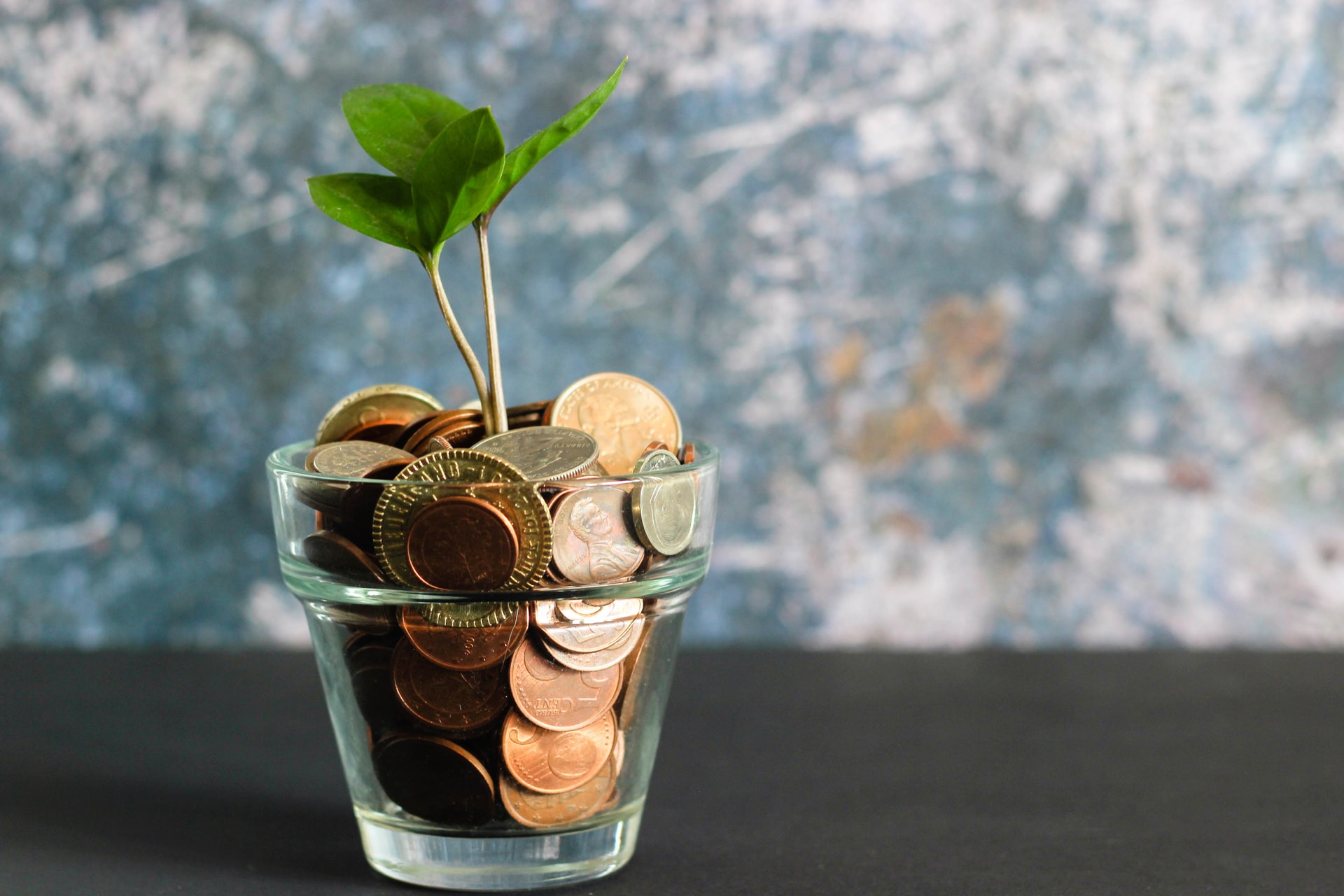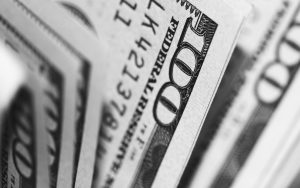Registered Retirement Savings Plan (RRSP)

Registered Retirement Saving Plan (RRSP)
Registered retirement saving plan/account, RRSP in short, is a kind of account that is designed to help you save for your retirement. By investing within your RRSP, as long as your money remains in plan, not only you will be exempt from paying taxes on profits gained, but you can also get back some of the tax you already paid in that year!
The logic behind this account is that over the years that your income exceeds your needs, by taking part in RRSP, you can both save money and reduce your tax payment; and, in return, you can withdraw the money from the RRSP account during your retirement years and benefit from it (the years that your income will be reduced and therefore you’ll be in a lower tax bracket)
Simply put, the amount you deposit every year to your RRSP account, will not be considered taxable income and therefore you can enjoy a tax refund from the government for the amount proportionate to your contributions. For instance, if you have an income of 40 thousand Dollars and you deposit 5 thousand of that to your RRSP account, the government will re-calculate your tax for a 35 thousand Dollar income, and you will be refunded for the extra tax you paid that year. Moreover, should you invest the money in your RRSP (shares, guaranteed investment certificate, savings account, etc.), no tax will be paid for the profits gained as long as it remains inside the RRSP.
Please keep in mind that RRSP is not a tax-free account, but an account involving tax deferral. The aim is to pay the tax for the money accumulated in the account at the time when you have a lower total income due to retirement; therefore, being placed in a lower tax bracket.
Thus, RRSP will cause capital growth in two ways:
1- Increase in net income by direct tax refund from the government as per your cooperation;
2- Tax free capital growth inside the account.
Similar to TFSA, you can enjoy a wide array of investment facilities such as shares, bonds, mutual funds, guaranteed investment certificate, etc.; however, you must note that unlike TFSA, the RRSP tax exemption only applies as long as the capital is kept inside the account and as soon as a withdrawal from this account, the tax for the profits gained in it must be paid (though there will be some exceptions which will be addressed below).
As mentioned before, your contribution to RRSP will not only be sheltered from tax, but also qualifies you for tax rebate.
Nevertheless, like TFSA, the RRSP has its terms and conditions and special limitations which, if not understood well, might result in a higher total tax payment! But if implemented in the right manner, it is even sometimes beneficial to borrow money, if you do not have access to cash, and take part (will be explained later)
RRSP Account Advantages
1- Reducing gross taxable income equal to your contribution and therefore reduction in you paid tax to the government.
2- The capacity to transfer money/capital to other registered accounts without taxation.
3- The money gained can be a financial aid for your retirement years.
RRSP Account Disadvantages
1- You have to have an income to contribute to an RRSP account. In fact, your annual contribution depends on your income in the previous year (up to a maximum) and if you do not report your income to the government in tax reports, you will not be allowed to participate.
2- There is a maximum limit for the amount of your contribution and you cannot deposit more than your limit. Overall, you can have an extra deposit of maximum 2000 Dollars in your RRSP account in your lifetime, penalty free; however, if you deposit more, you will be penalized 1% of the excess amount monthly until you withdraw the money from the account.
3- Should you have to withdraw money from your RRSP account because of financial hardship and use it, the money withdrawn will be calculated as part of your income in that year and you will be obliged to pay the relevant tax. Now if the sum of the mentioned withdrawn money and your income do not increase your tax bracket, you will practically be paying the same tax that you were refunded by the government before (there will be no loss), but if your withdrawal is sizeable and/or your income is significantly higher than the time you deposited the money into your RRSP account, you might even have to pay more tax. There is also the possibility of you income having become less, in which case you will pay less tax.
The following example elaborates on this matter more:
Mr.A has had an annual income of 40000 Dollars in the past 10 years, and has been depositing 5 thousand Dollars annually in his RRSP account (i.e. a total amount of 50 thousand Dollars has been deposited into the RRSP account in the past 10 years).
Imagine that the province Mr.A resides in, has provincial and Federal taxation for income as per the following table:
ü Under 6000 Dollars No Tax
ü Income up to 55 thousand Dollars 25%
ü The rest of income from 55 to 90 thousand Dollars 35%
ü The rest of income higher than 90 thousand Dollars 45%
This means that Mr.A, for his 50 thousand Dollar contribution, has received an annual tax refund of 1250 Dollars (25% times 5000 Dollars) in the past 10 years:
Calculations:
40 thousand Dollars income X 25% = 10000 Dollars payable tax
Now that 5 thousand is deposited into the RRSP account, the income tax will be calculated for 35 thousand Dollars by the Tax Administration.
35 thousand Dollars income x 25% = 8750 Dollars payable tax
Difference = 1250 Dollars refund for a year
This means that Mr.A has been refunded a total of 12500 worth of tax by the government in the past 10 years (net income increase). Moreover, Mr.A’s 5 thousand Dollar contributions have been in the form of investments; buying each year with those 5 thousand Dollars under the umbrella his RRSP account various investments like Guaranteed Investment Certificate, mutual funds, or shares which had their growth are now worth 80,000 Dollars (capital growth).
So, to summarize, Mr.A has invested 50 thousand Dollars under his RRSP account in the past 10 years, which by the capital growth is worth 80 thousand Dollars today, and has also been refunded 12500 Dollars of tax difference from the government.
Now imagine the following cases:
First case: Mr.A continues to have the same amount of income, but has decided to do a little renovation in his house. As he does not have enough money, he withdraws 5000 Dollars from his RRSP account and carries out the renovation. For the same reasons, he will not have the money to cooperate in RRSP this year. What happens is that Mr.A must report an income of 45 thousand Dollars this year instead of 40 thousand Dollars (40 thousand Dollars salary plus 5 thousand Dollars withdrawn from his RRSP account); therefore, he will have to pay more tax. In this example, although Mr.A will pay more tax but because, for instance, the tax bracket of the province he lives in does not change until 55 thousand Dollars of income, the percentage of a 40 thousand Dollar income and a 45 thousand Dollar income is the same (25% for both 40 and 45 thousand Dollars of income) and Mr.A is in fact paying back the 1250 Dollar he has taken from the government in previous years. The balance here will be zero.
Second case: Mr.A still has the same income but he has decided to do a big renovation in his house this year. Since he doesn’t have enough money, he withdraws 30000 Dollars from his RRSP account and carries out the renovation. For the same reasons, he will not have the money to cooperate in RRSP this year. What happens here is that Mr.A must report an income of 70 thousand Dollars this year instead of 40 thousand Dollars; therefore, he will have to pay more tax. The difference between this case and the first case is that although Mr.A still receives a 40 thousand Dollar salary, because of this withdrawal of money from his RRSP account and its addition to the taxable income of that year (which is 30+40=70 thousand Dollars), his tax bracket margin has risen from 25% to 35%, meaning that for 55 thousand of that income he will pay 25% tax, but for the remaining 15 thousand Dollars he must pay 35% tax. Therefore, for 15 thousand Dollars of the 30 thousand Dollars withdrawn from the RRSP account (i.e. from 40 to 55 thousand), he will have to pay 25% tax (like before) and for the remaining 15 thousands (i.e. from 55 thousand to 70 thousand) he will have to pay 35% (10% more) tax.
Final result: for the 30 thousand Dollar withdrawn from his RRSP, Mr.A has been refunded 7500 of tax by the government (30 thousand x 25%) but this year he will have to pay 9000 Dollars (15 thousand x 25% + 15 thousand x 35%)! I.e., 1500 Dollars more.
Third case: Mr.A has made significant progress in his job and his income has recently reached 100 thousand Dollars ( with an imaginary tax margin of 45%). This year he has decided to do a small renovation in his house. Although he has a high income, he also has high expenses and he does not have enough money; therefore, he withdraws 5000 Dollars from his RRSP account and carries out the renovation. For the same reasons, he will not have the money to cooperate in RRSP this year. What happens here is that Mr.A must report an income of 105 thousand Dollars this year instead of 100 thousand Dollars. While the tax percentage for a 100 thousand Dollar and a 105 thousand Dollar income do not differ (it’s 45%), it is still far more than the time Mr.A deposited the money in his RRSP account and received a tax refund from the government. At the time he had a 40 thousand Dollar income and for his 5 thousand Dollar contribution in RRSP he had received 1250 Dollars (5000 x 25%) from the government, but this year he must pay the tax for the withdrawn 5 thousand Dollars as per the tax margin related to his total income which will be 2250 Dollars (5000 x 45%), which is 1000 Dollars more!
Fourth case: Mr.A has unfortunately lost his job for some reason and his unemployment compensation has also been finished and he does not have any source of income. Fortunately, he has been able to stay in his relatives’ house and he does not pay rent, but he needs money for his food and daily needs. Therefore, he withdraws 6 thousand Dollars from his RRSP for this year’s expenses. Since Mr.A does not have any other income, this year his income is the same 6 thousand Dollars withdrawn from the RRSP and as it is under the limit, it is exempted from taxation. Therefore, although Mr.A has withdrawn money from the RRSP and spent it, he will practically not pay any taxes (while he was refunded 6 thousand x 25% = 1500 Dollars of tax by the government at the time of contribution).
An important note about the mentioned cases: these are only examples of how the deposit and withdrawal system of the RRSP works. The numbers and margins stated are not accurate, hypothetical and just for explaining the mechanics. Moreover, your final profit or loss at the withdrawal from RRSP depend also on other factors which cannot be calculated. For instance, in the cases where Mr.A was in loss, imagine that at the time of transfer to RRSP, the initial money was invested in a very successful share and had become 10-fold during all those years. Eventually, the loss that Mr.A suffered from the extra tax payment will probably be negligible compared to the profit he gained because of that investment and not only Mr.A didn’t lose, but he also profited greatly.
Nevertheless, investment in RRSP has conditions and regulations which will be addressed in the following section:
RRSP regulations and limitations:
1- Contribution to the RRSP account is only possible until the 31st of the December of the year I which you turn 71 years old.
2- Your maximum amount of contribution to RRSP depends on your previous year income which will be calculated as follows:
18% of your previous year income, provided that the amount in Dollars does not exceed the maximum amount designated for that year (e.g. the maximum for 2020 is 27230 Dollars)
Example:
ü If your reported income for the previous year was 40 thousand Dollars, you can cooperate in your RRSP up to a maximum of 7200 Dollars (18%)
ü If your reported income for the previous year was 110 thousand Dollars, you can cooperate in your RRSP up to a maximum of 19800 Dollars (18%)
ü If your reported income for the previous year was 300 thousand Dollars, you can cooperate in your RRSP up to a maximum of 27230 Dollars (18% times 300 thousand Dollars is 54 thousand Dollar which is more than the maximum limit of contribution)
1) If you can’t contribute to your RRSP in one year, the chance will not be lost, but transferred to the coming years and this transfer will continue until the age of 71. If you have been working in Canada for many years and have never had contributed in your RRSP, you must have accumulated a significant total limit for contribution in RRSP. the exact and updated amount of which can be acquired from the Canada Revenue Agency (CRA) website.
2) The income which will be regarded for the calculation of your maximum limit of contribution in RRSP include your salary, income from property lease and business revenue. The income gained from investment like shareholders’ profit or capital gain or bank interest will not be accounted as part of a person’s income in the calculation of RRSP maximum contribution.
Example: Mr.B’s income in 2020
50 thousand Dollars for the salary in his main job
20 thousand Dollars for his freelance maintenance job
10 thousand Dollars from selling of shares
2 thousand Dollars for Guaranteed Investment Certificate bank interest
In this example, the CRA will consider Mr.B’s income only 70 thousand Dollars for the purpose of calculating the maximum limit for contribution, 18% of which is 12600 Dollars. As 12600 Dollars is less than the 2020 maximum limit (27230); thus, Mr.B can contribute 12600 Dollars in his RRSP account in 2021.
1) In addition to the abovementioned formula, the calculation of RRSP contribution has other parts which are not in the scope of this article. Nevertheless, do not attempt to calculate the maximum limit of RRSP contribution yourself. The CRA calculates this limit for you according to your tax information and updates it in its site. Instead of calculation, refer to your profile in the CRA website or enquire it via phone.
2) In order to be eligible for a tax refund for the previous year, you must have had your contribution in RRSP up to the first 60 days of the current year. This means that if you want to receive a tax refund from the government as per your RRSP contribution for the year 2020, you must have carried out your contribution by the end of the first 60 days of 2021.
As stated before in this article, money withdrawal from RRSP involves tax re-payment, but there are exceptions to this rule which you can implement to take money out of your RRSP account for some time without paying any taxes.
The exceptions of RRSP withdrawal without tax payment:
1) Withdrawal from the registered retirement savings account to buy your (first) house under the home buyer’s plan: One of the exceptions under which you can withdraw an amount from your RRSP, but not pay any taxes for it is withdrawal to take part in the home buyer’s plan. In this case, your withdrawal from the RRSP account will not be considered a withdrawal, but a kind of no interest loan form your own account. This program has lots of advantages. For instance, a person who does not have enough money to pay the advance payment of at least 20% to buy the house, most probably can not receive a conventional mortgage with a suitable interest rate and will have to use insured mortgages with higher interest rates which will add the burden of an extra cost for insurance. But if the same person has an active RRSP account, he can temporarily withdraw an amount of money and provide the advance payment to buy the house without causing any problems or repayments regarding the refunded taxes.
Of course, under this program, each person can withdraw a maximum amount of 35000 Dollars from his/her account (if you are a couple, you can withdraw two 35000 Dollars which is 70000 Dollars from your RRSP accounts) and the withdrawn money must be returned to the RRSP plan in a maximum deadline of 15 years (repayment has an annual minimum and must be commenced before the March of the third year after the withdrawal). If you do not succeed in repaying the money as per the time schedule, the remaining unrepaid amount will be accounted as your income and you must pay its tax (which depending of your tax bracket and your income at the time of the deadline could be equal to, more or less than the tax you should have originally paid). In order to be authorized to withdraw money from the account, you must note that you should be a first-time home buyer. The question arises that who will be considered a first-time buyer? For a person to be considered a first-time buyer, they must have one of the conditions below:
The person or his/her partner must not have lived in a house belonging to them for the past 4 years. Even if the person or the partner had owned a house in the past, there is the possibility that only one of them will be eligible for this program. Moreover, to use this program you must have a contract for buying or building a house.
Note 1: The amounts deposited to the RRSP account 90 days before withdrawal will not be considered for withdrawal under this program. Therefore, you should consider that you cannot deposit an amount in your RRSP account days before the purchase of a house in order to be exempted from taxation and withdraw the money immediately for the home buyer’s plan.
Note 2: The minimum repayment amount for e.g.,35000 Dollars will be 2333 Dollars. Please note at the time of withdrawal from RRSP for the advance payment or buying a house that if you want the amount to be exempted from taxation under this plan, you have to be able to repay the minimum annual amount to the RRSP account after the third year.
Note 3: If the person using the home buyer’s plan to withdraw money from RRSP reaches 71 year of age, that person will not be authorized to repay the amount.
Note 4: Although it might seem obvious, the money withdrawn from RRSP under the home buyer’s plan will not undergo double taxation.
Note 5: The designated house could be new or old, but it must be located in Canada and it must be used as the main residence over the one year after purchase (must not be leased) and it must be purchased before the October of the year in which you have withdrawn from you RRSP account.
2) Withdrawal from the Registered Retirement Saving Plan to continue your education under the Lifelong Learning Plan
The aim of this program is to help people to continue their education. In order to withdraw money from the RRSP account under this plan you must enroll in a full-time undergraduate program/field in a university or college. Under these circumstances, you are allowed to withdraw a maximum of 20 thousand Dollars for your account in a period of 4 years (the annual maximum limit being 10 thousand Dollars). Your first repayment to return this money to the RRSP account must be 60 days after the end of the fifth year after the beginning of withdrawal and the whole amount must be returned to RRSP at most in 10 years.




